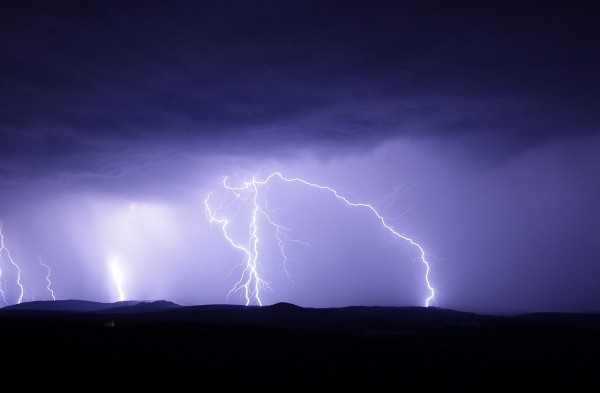
As allergy sufferers can attest, thunderstorm activity can exacerbate asthma and respiratory ailments.
In fall 2016, when strong storms moved across southeastern Australia, a major thunderstorm asthma epidemic struck Melbourne and the surrounding area. High grass pollen concentrations dispersed by strong, gusty winds led to multiple deaths and a flood of residents seeking medical attention for respiratory problems.
Now, University of Georgia researchers are exploring new ways of predicting thunderstorm asthma outbreaks that may one day provide early warnings for health professionals, emergency management officials and residents in affected areas.
The study, published by researchers from UGA and Emory University in the Journal of Applied Meteorology and Climatology, is one of the first to specifically include well-known aspects of thunderstorm diagnostics often used by meteorologists to assess storm severity.
According to the study, the combination of rainfall, winds and lightning from thunderstorms in conjunction with pollen or mold spores can worsen asthma symptoms. Rainfall and high humidity rupture bioaerosols, particularly rye grass pollen grains. Thunderstorm electrical activity contributes further pollen fragmentation, and gusty winds can spread pollen granules ahead of the storm. Several of the factors in combination may result in these events reaching epidemic proportions.
"Thunderstorm asthma is a very complex phenomenon and involves interactions of allergens like grass pollens, thunderstorms and susceptible groups of people," said lead author Andrew J. Grundstein, professor of geography in UGA's Franklin College of Arts and Sciences. "Our study may help anticipate significant thunderstorms by employing a technique that helps identify wind magnitudes commonly associated with thunderstorm asthma outbreaks."
By cross-referencing several forecast modeling tools, and especially as the modeling accuracy and resolution of the tools improve, the public and emergency service providers can be better prepared for the incidence of thunderstorm asthma events.
"While this study does not yet provide the capability of predicting thunderstorm asthma outbreaks, our methodology may provide a key piece to the puzzle for alerting public health officials about what storms may trigger an episode and which ones may not," said co-author Marshall Shepherd, Georgia Athletic Association Distinguished Professor of Geography and Atmospheric Sciences.



